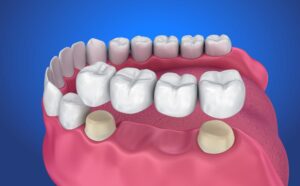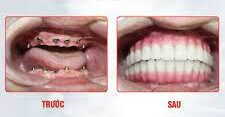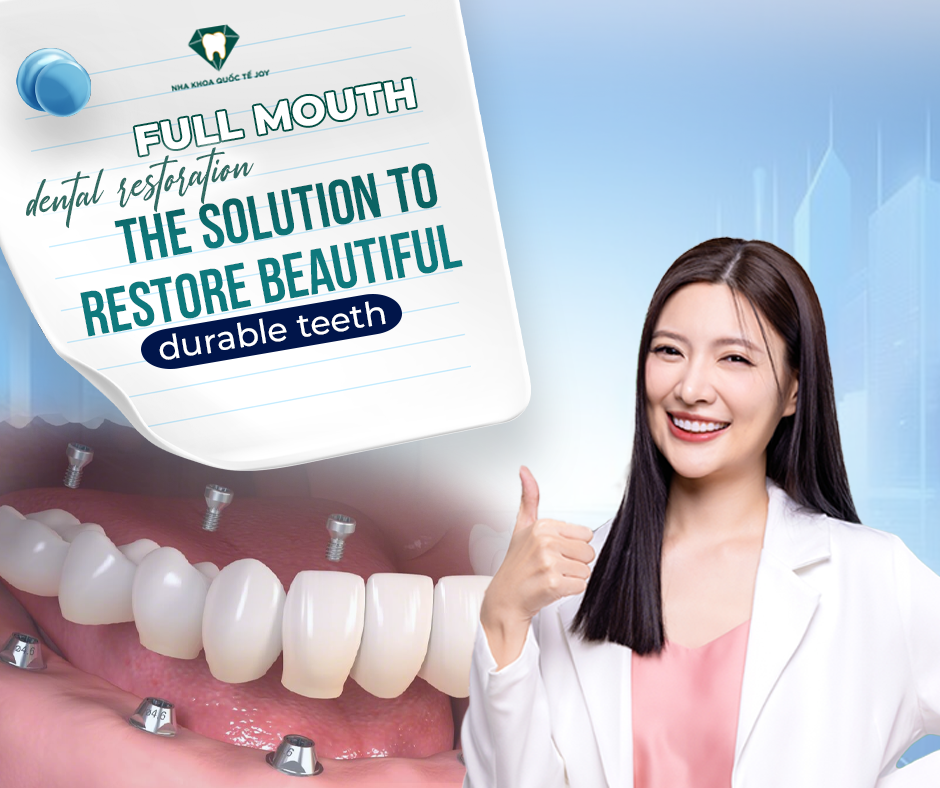If you have lost all your teeth, there is no need to worry too much. With the advancement of modern technology, many full mouth dental restoration methods have been developed to meet the needs of both chewing function and aesthetics. So, what are the available full mouth dental restoration method? Let’s explore them in detail with Joy International Dental Clinic in the following article.
1. Main Causes of Full Mouth Tooth Loss

Full Mouth tooth loss not only affects aesthetics but also significantly impacts oral health. This condition can arise from several causes:
One of the primary causes is periodontal disease, which weakens the gums and jawbone, making the teeth loose and eventually fall out over time. Additionally, severe untreated tooth decay can also lead to tooth loss.
Another common cause is jawbone resorption due to aging, a natural process that leads to gradual tooth loss, especially in older adults.
Furthermore, external factors such as accidents, trauma, and even unhealthy habits can contribute to Full Mouth tooth loss. Consequently, chewing function and overall quality of life can be significantly affected.
2. The Most Popular Full Mouth Dental Restoration Methods Today
Nowadays, various Full Mouth dental restoration methods are available to help individuals regain their ability to chew and restore confidence. Each method has its own advantages and disadvantages.
2.1 Full Mouth Dental Restoration with Removable Dentures

Removable dentures are a traditional method that remains popular today, especially among the elderly. In this method, dentists use dentures made of plastic or a combination of plastic and metal frames to quickly replace missing teeth.
The biggest advantage of removable dentures is their affordability, making them suitable for those who need dental restoration but have a limited budget. Additionally, this method is relatively simple and does not require intervention in the jawbone or remaining natural teeth.
However, because removable dentures are not fixed securely, they may shift while eating, causing discomfort. Moreover, long-term use can lead to jawbone resorption, which may alter facial structure.
2.2 Full Mouth Restoration with Dental Bridges

Dental bridges are another popular method for tooth restoration. This approach involves filing down two adjacent teeth to serve as anchors for the bridge, which is then fixed in place. Dental bridges offer better chewing stability than removable dentures.
The main advantages of dental bridges include their durability, the ability to restore chewing function close to natural teeth, and a high aesthetic appeal. With proper care, dental bridges can last for many years.
However, the biggest drawback is the need to file down natural teeth to support the bridge, which may weaken them over time. Additionally, bridges do not prevent jawbone resorption, and after prolonged use, the gums underneath may recede.
2.3 Full Mouth Restoration with Dental Implants

Full Mouth dental implants are considered the most advanced and optimal solution today. This method involves placing titanium implants directly into the jawbone to serve as artificial tooth roots. The implants are then topped with dental crowns to restore function and aesthetics.
The most significant advantage of dental implants is their ability to fully restore chewing function, eliminating discomfort associated with removable dentures. Additionally, they provide excellent aesthetics and prevent jawbone resorption.
Although dental implants are more expensive than other methods, their durability and effectiveness make them a worthwhile investment. With proper care, implants can last a lifetime.
3. Standard Medical Procedure for Full Mouth Dental Implants
The process of Full Mouth dental implantation is complex and requires a high level of precision from experienced dental professionals. The procedure includes the following steps:
Step 1: Consultation and Examination
First, the dentist will conduct a thorough oral examination, including X-rays or a CT Cone Beam scan, to assess the jawbone density. Based on the findings, the dentist will recommend the most suitable treatment plan.
Step 2: Treatment Planning
After gathering the necessary data, the dentist will create a customized treatment plan, detailing the number of implants required, their placement, and the type of dental crowns to be used. In cases of severe bone loss, a bone graft may be necessary before implant placement.
Step 3: Implant Placement Surgery
During the procedure, local anesthesia is administered to ensure a painless experience. The dentist will precisely place the implants into the pre-determined jawbone locations. The entire procedure typically takes 1-2 hours.
Step 4: Attaching the Dental Crowns
Once the implants have fully integrated with the jawbone, the dentist will take impressions and design custom crowns. The crowns are then securely attached to the implants, completing the restoration process.
4. Frequently Asked Questions About Full Mouth Dental Implants
4.1

With proper care, dental implants can last a lifetime. The implants are made of titanium, a highly durable and biocompatible material that integrates with the jawbone without being rejected by the body.
However, the longevity of dental implants also depends on oral hygiene practices. Maintaining good oral hygiene, following a healthy diet, and attending regular dental check-ups will ensure the long-term success of the implants.
4.2 Major Benefits of Full Mouth Dental Implants

- High durability and strength: Implants function like natural teeth, allowing comfortable chewing without slipping or discomfort.
- Prevention of jawbone resorption: Unlike traditional methods, implants replace the entire tooth structure, stimulating bone growth and preventing facial collapse.
- Aesthetic appeal: The crowns on implants are designed to closely resemble natural teeth in color and shape, enhancing the appearance of your smile.
- Preservation of remaining teeth: Unlike dental bridges, implants do not require filing down adjacent teeth, ensuring the protection of natural teeth.
Conclusion
Full Mouth dental restoration is not a complicated process, especially with modern advancements in dental technology. Each method has its own advantages and drawbacks. Hopefully, through this article from Joy International Dental Clinic, you can determine the most suitable option for your needs. Feel free to contact us for further consultation and detailed information!






